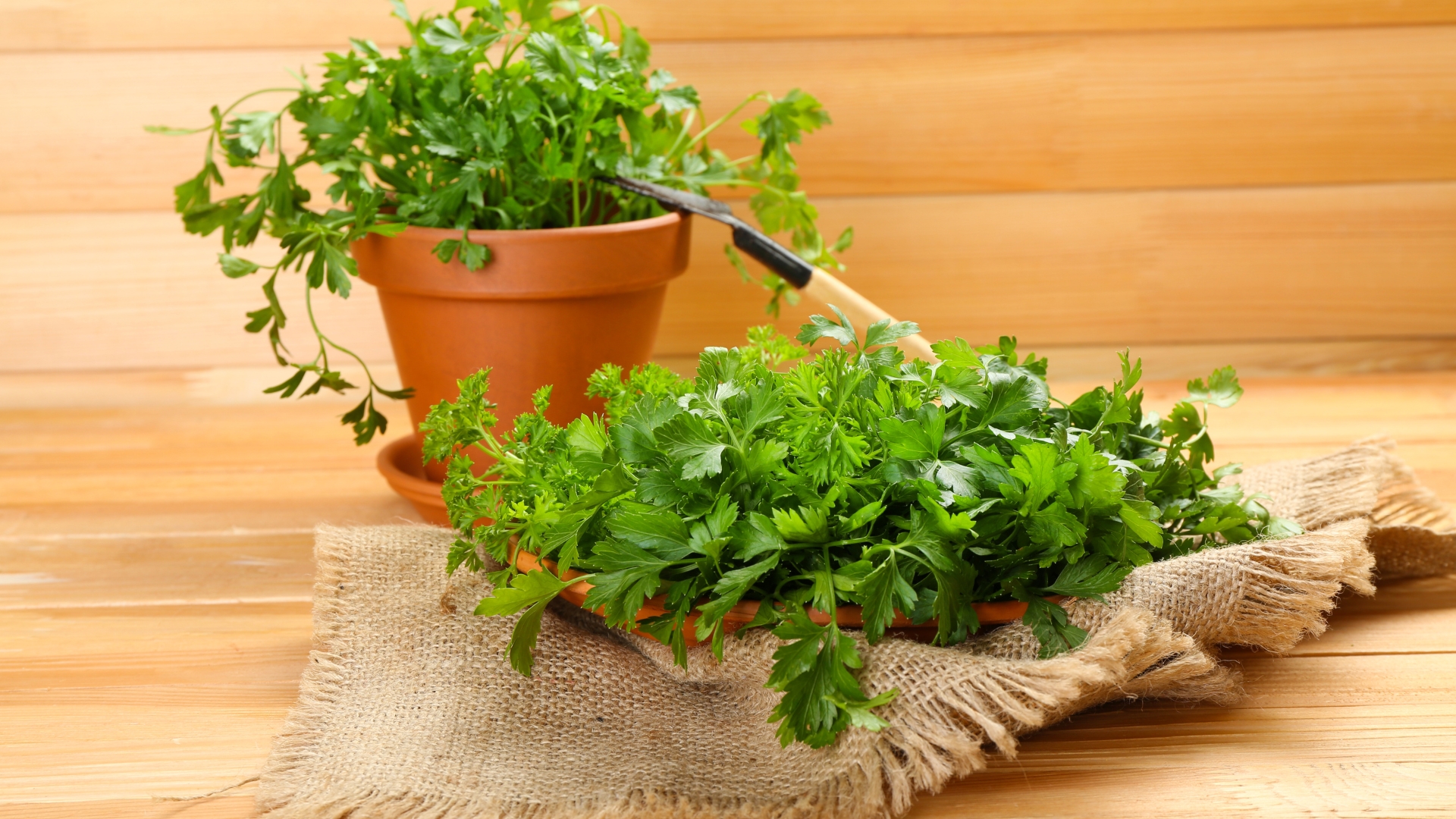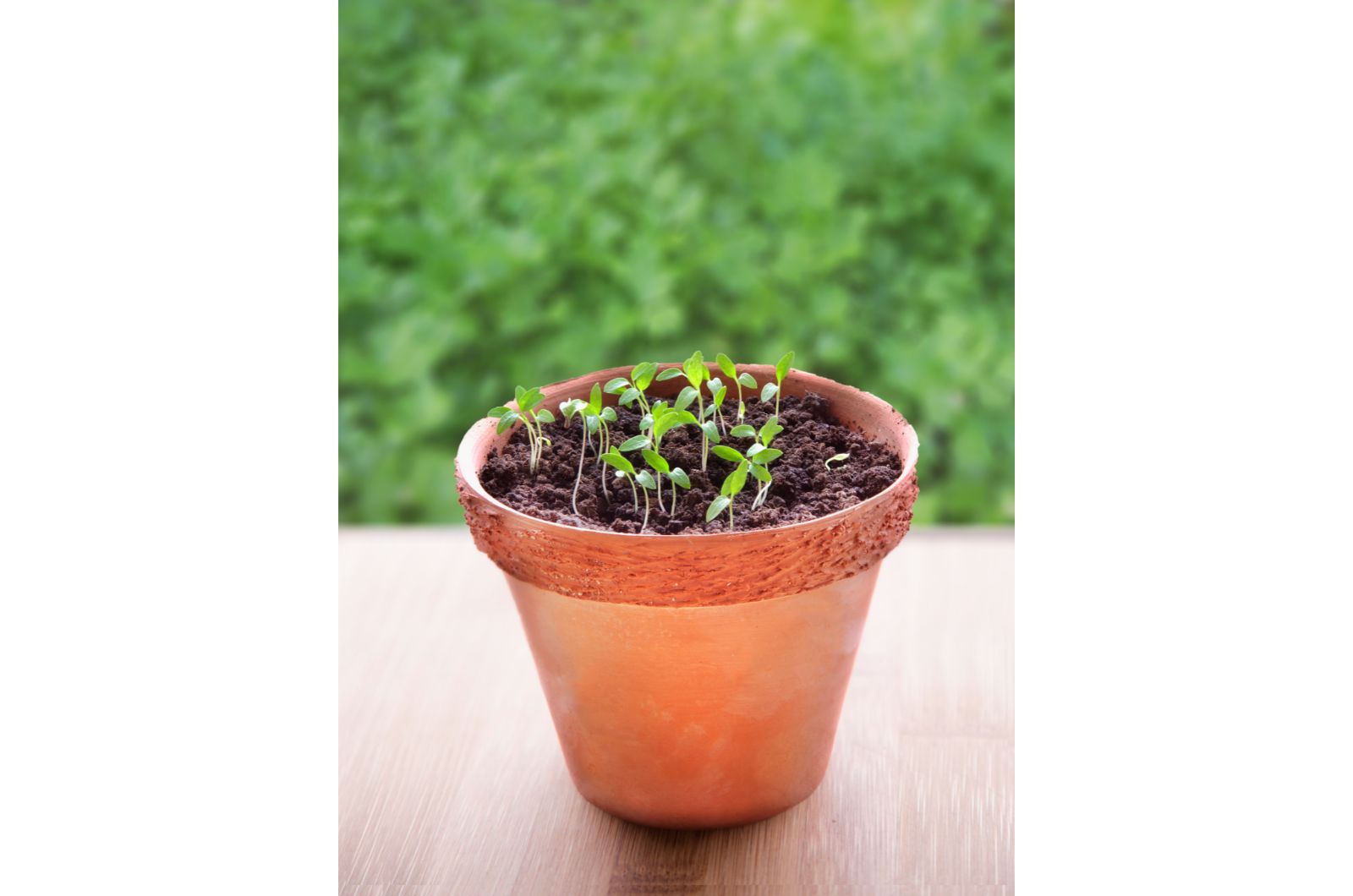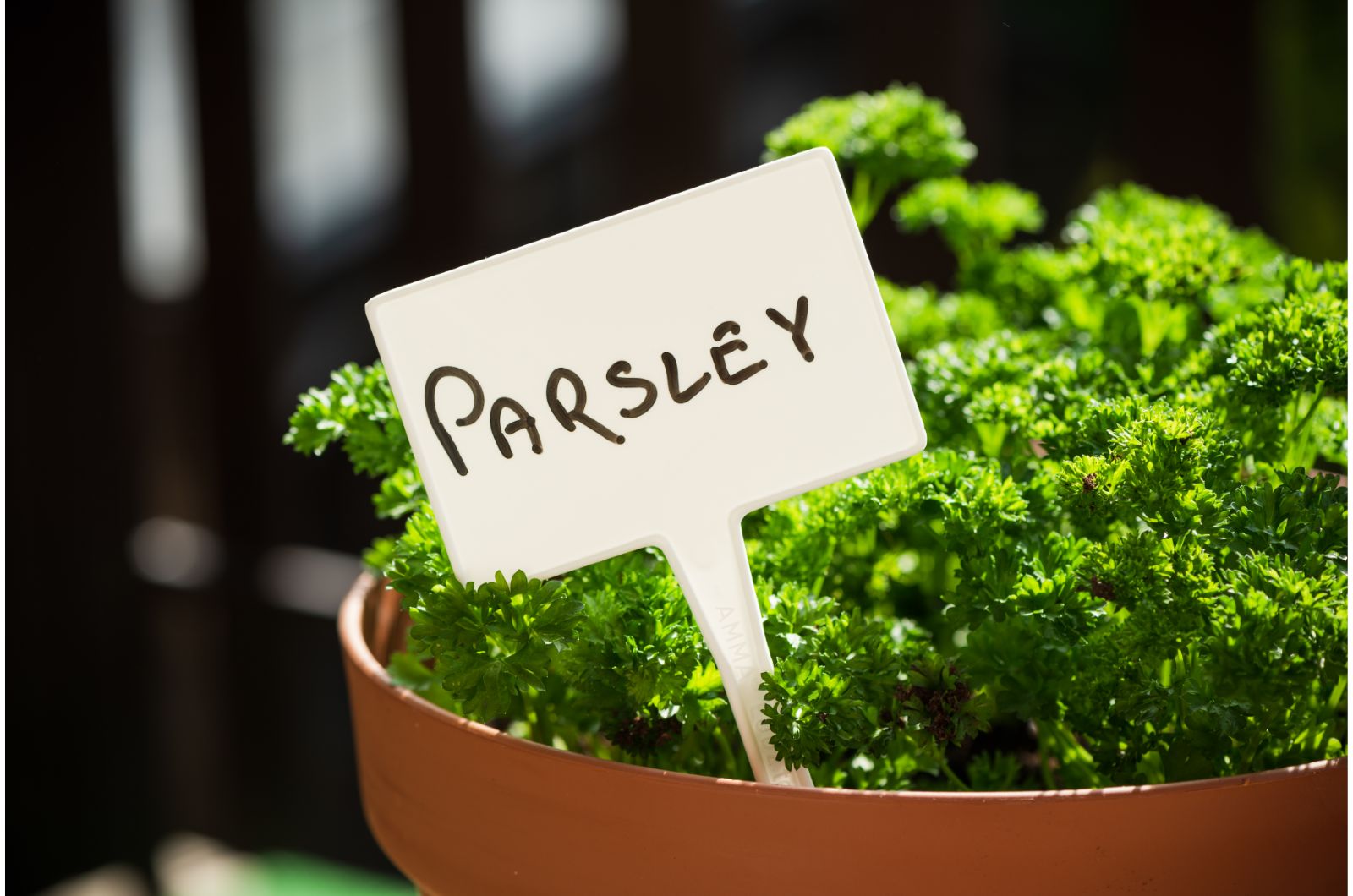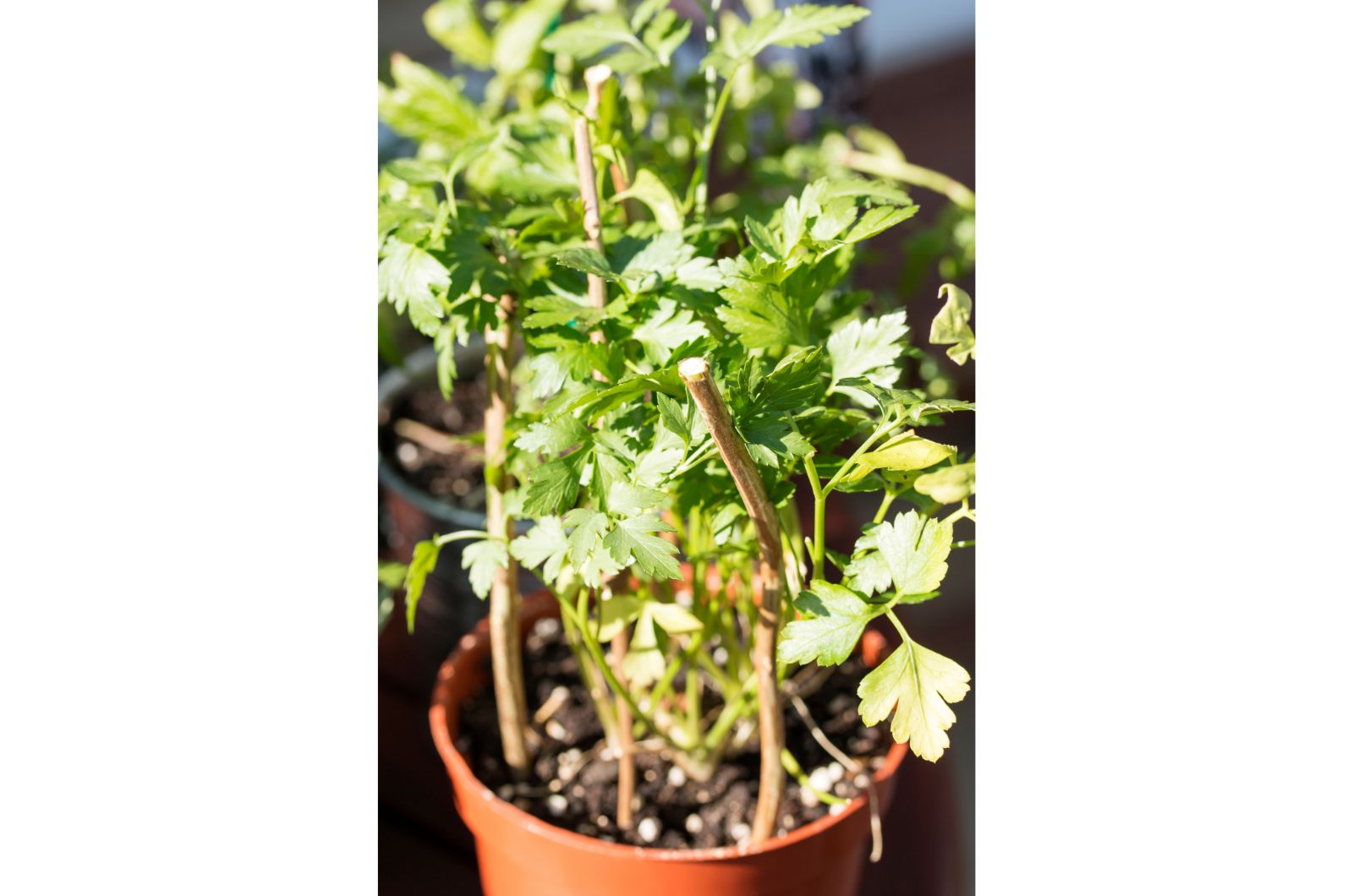Nothing beats the flavor of homegrown parsley! If you have limited space, cultivating parsley may sound like something impossible.
Luckily, parsley is a herb that performs well in containers, and if you have a sunny windowsill, you have all the predispositions to grow it.
If you want to have this herb at hand, just follow the tips for growing parsley in pots I’m about to give you!
Let’s get started!
1. Select The Right Pot
The good news is that parsley isn’t picky over the pot material. You can grow this herb in fabric grow bags, ornamental pots, and famous terracotta planters.
But there are two things that matter way more when it comes to a pot for your parsley. The first one is drainage holes because parsley is sensitive to overwatering and all the excess water must drain from somewhere.
The second thing is the size of parsley plants; for a single plant, you need to choose pots that are at least 6 inches wide. I keep my parsley in pots that are 12 inches deep and wide, and it seems that this herb enjoys it.
2. Use High-Quality Soil
Most potted plants perform best when grown in standard potting soil, and parsley isn’t an exception.
This substrate has good drainage and enough nutrients to support the growth of your parsley.
If you’re unsure if your potting soil has enough nutrients, simply amend it with worm castings or compost before planting.
3. Start Early Enough
The great thing is that any parsley variety will do well when planted in a container. You can start your parsley from seeds or transplants, depending on how impatient you are about the harvest.
If you’re starting from seeds, I highly recommend sowing them a month and a half before the last expected spring frost date.
You should harden off the seedlings about a month before transplanting and moving them outdoors.
4. Follow The Instructions From The Seed Packet
Never discard the seed packet because all the info about parsley planting is written on the label.
When sowing parsley seeds, you need to plant them approximately ¼ of an inch deep and ensure a spacing of about 6 inches.
It typically takes a month for the parsley seeds to germinate, but if you want to give them a boost, simply soak them overnight before planting.
If you are starting parsley seedlings, make sure to plant them as deep as they were in their original containers.
5. Ensure Enough Light
If you want to keep your potted parsley outdoors, you need to find a spot that receives at least 6 hours of bright light daily.
However, if you live in warmer climates, you should ensure some afternoon shade for your parsley to avoid scorching.
When grown indoors, potted parsley performs best when kept on sunny windowsills. If you can’t provide your parsley with enough light, consider investing in artificial lights.
6. Water Regularly
Parsley is a herb with pretty tender stems and will need consistently moist soil to thrive.
A rule of thumb is to ensure an inch of water weekly for this herb, but you’ll most likely need to water your potted parsley more frequently.
Simply check the soil before irrigating and if the top inch is dry, proceed with watering.
7. Feed Accordingly
This is one of the best herbs for the kitchen because it doesn’t need a lot of food to flourish.
You can amend the growing substrate with worm castings or compost before planting your parsley.
Then switch to an organic liquid fertilizer; apply it once a month and make sure you dilute it to half strength before using it.
8. Inspect For Pests
Pests shouldn’t concern you much if you keep your parsley indoors. However, outdoor parsley is more susceptible to aphids, cutworms, and leafminers.
Of course, the danger of pests is lower when plants are kept in pots, but make sure to inspect them regularly.
You can add some parsley companions, such as basil or marjoram, to deter pests.
9. Harvest Your Parsley Often
The essential part of growing parsley in pots is frequent harvesting. However, there are some rules when it comes to harvesting parsley without killing it.
Start removing the leaves when the parsley plant reaches about 6 inches. Always harvest the outer stems and never remove more than a third of the entire plant.
10. Plan For The Next Season
Some refer to parsley as a perennial, while others claim that it’s an annual plant. Well, none of these statements are correct because this is a biennial plant and it will live for two years before going to seed.
You can collect the seeds once your parsley dies back but it’s easier to purchase the seeds the next year and grow this herb as an annual. Overwintering parsley requires special maintenance and it isn’t worth it since the seed price is really low.
Parsley is one of the best herbs out there and that’s not only because of its flavor but also because it needs little to thrive and performs well in containers.






